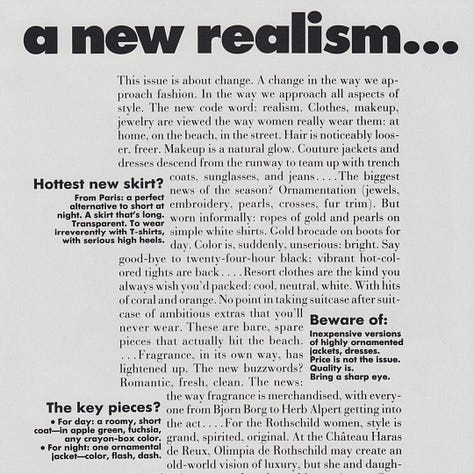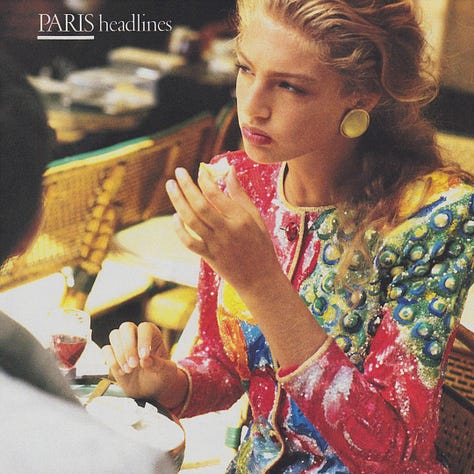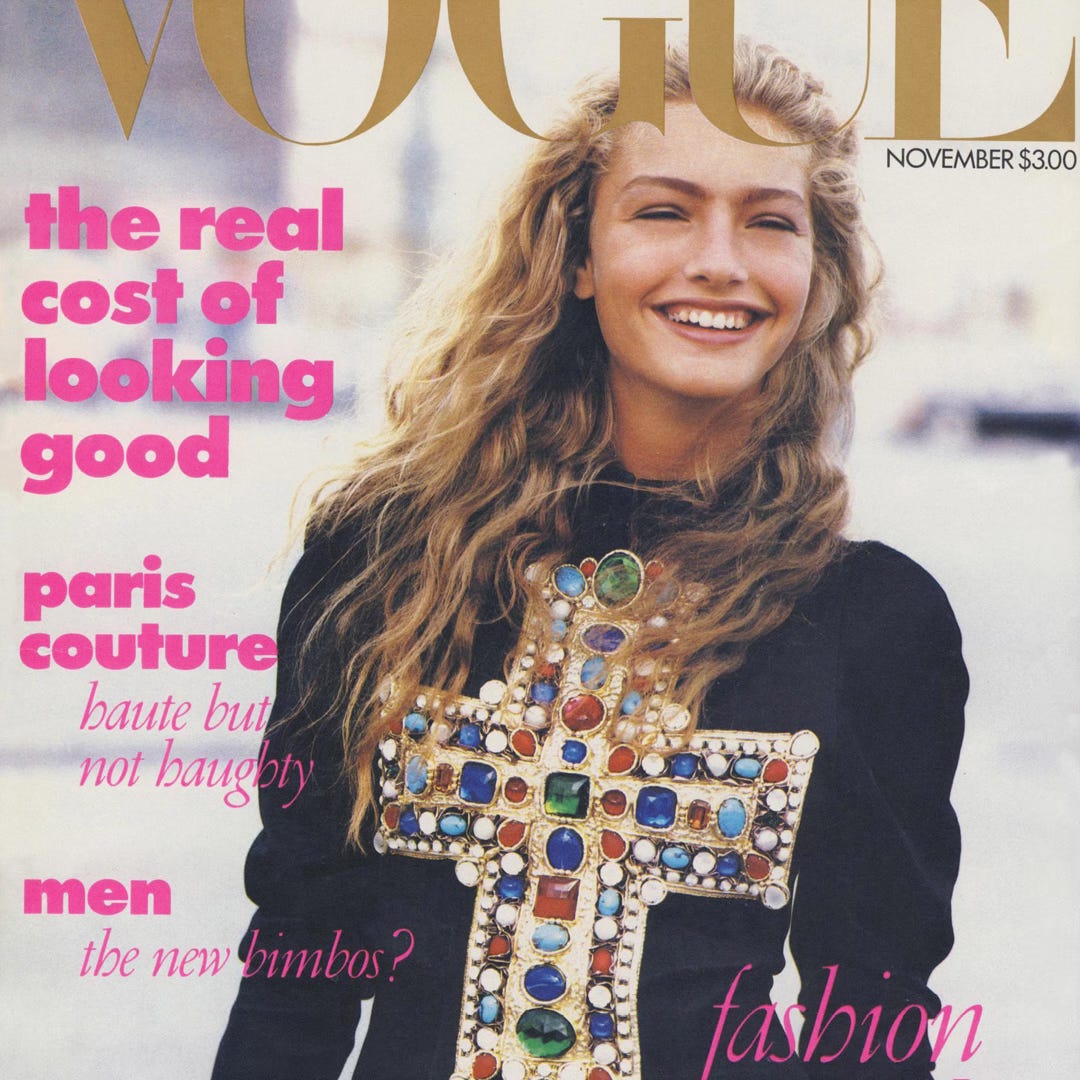It was November 1988 and the new issue of Vogue was out. The cover was photographed by Peter Lindbergh and styled by Carlyne Cerf de Dudzeele. The model, Michaela Bercu, was not looking directly at the lens. Instead, her eyes were barely open, and her hair was slightly messy. It looked like a spontaneous moment that happened to be snapped on the street on camera, and this was the whole point.
The Israeli model wore a haute couture jeweled Christian Lacroix jacket that cost at least $10,000 with a pair of stonewashed blue Guess jeans that cost $50. The jacket had a matching skirt, but it didn’t fit Michaela. It didn’t matter: a cultural moment was born.
At the same time that the jacket portrayed couture’s fantasy, the jeans—for the first time on the magazine's cover—portrayed an ordinary reality. Michaela’s nonchalant pose portrayed a young woman smiling and having fun, something anyone could achieve. It reflected a new direction for the magazine. Inside, the same mood followed: one model walking on the street of Paris wearing a couture gown and holding a stereo, another eating a pastry at a café and wearing an embroidered jacket.
Anna Wintour’s first issue of Vogue was, in her words, “a transitional one.” But it was more than that: it was a sharp contrast to Vogue’s formula. Until then, the magazine’s covers were portraits with plenty of heavy makeup and hair. The magazine under Grace Mirabella, Wintour’s predecessor and editor-in-chief since 1971, coincided with the rise of working women. The “beauty shots” offered an ideal beauty. With models on the cover, the magazine was aimed at the women of the 9-to-5. Under Wintour, however, Vogue’s approach shifted by offering real-life scenarios on the streets.
At the time of the appointment, there was a need for more risqué editorial. Although Vogue remained dominant in fashion, the magazine was losing young readership to Elle quickly. Bringing Anna Wintour was a move to give it a contemporary look. With her, Vogue adopted elements of Elle’s layout, spreading editorial matter through the magazine rather than clustering it in the middle, as well as expanding fashion content. This way, the magazine increased the content at the back of the book.
By mixing jeans and couture, Wintour intended to communicate a new way of dressing. She didn’t want a “shoe-to-hat approach” that didn’t reflect “something you could be.” Instead, she emphasized personal style. A woman makes a look her own by the way she puts pieces together. The look was supposed, then, to create a middle ground between fantasy and reality and to accentuate creativity in dressing.
It wasn’t, however, as some people interpreted, as a mix of high and low. Not, at least, according to Anna Wintour. She later claimed she looked at that photo and sensed the change of times. As she said in an interview, “I think we took a freer attitude to fashion. When we looked at the couture this time, we tried to look at it in a more accessible way.”
By breaking the rules and mirroring the times, Anna Wintour created a new age for Vogue. It was not only a turning point in the magazine but also in the industry. The new editor-in-chief’s approach was more readable and reachable to the audience. While maintaining the grandeur of couture, she bridged the gap between reality and fantasy. Fast forward over 30 years, and the issue is as contemporary as ever.



Reference
• New York Times, August 15 1987 issue; “Wintour Leaving British Vogue for House & Garden” by Michael Gross;
• New York Times, June 08 1988 issue; “HG Magazine Is Not What It Used to Be” by Susan Heller Anderson;
• New York Times, June 30 1988 issue; “Anna Wintour Transferred to Head Vogue Magazine” by Susan Heller Anderson;
• New York Times, July 25 1988 issue; “Changes at Vogue: A Complex Tale of Rumors and Facts” by Woody Hochswender;
• New York Times, September 25 1988 issue; “SI Newhouse Tests His Magazine Magic” by Geraldine Fabrikant;
• New York Times, October 31 1988 issue; “The Media Business; Vogue Tries a More Relaxed Look” by Geraldine Fabrikant;
• New York Times, April 30 1989 issue; “The Jury's Out on The Hipper Vogue” by Geraldine Fabrikant;
• Vogue US, November 01 1988 issue.





